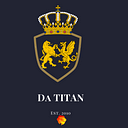Cartesi is a layer-2 platform for the building and deployment of scalable decentralized applications. Cartesi DApps are composed of both blockchain and off-chain components. Off-chain components run inside Cartesi Nodes that represent the interests of every DApp user. Cartesi Nodes provide DApp developers with reproducible Cartesi Machines, where large scale verifiable computations are often run. These verifiable computations are easily integrated into smart contracts by powerful primitives that provide strong conflict resolution guarantees.
Layer 2 blockchain technology is usually classified as an “off-chain” solution. Its goal purpose is to scale blockchain transactions, while retaining the decentralization benefits of a distributed protocol. Layer 2 platforms and protocols process data in a way that helps decreases the load of the root chain. By offloading the loads from most chain onto layer 2 platforms, the Catersi network can handle much higher transaction throughput. Solving the scalability problem will significantly help with blockchain mainstream adoption.
More precisely, any dispute arising over the results of computations run inside Cartesi Machines are often fairly adjudicated at negligible cost on the blockchain. Cartesi Nodes also allow DApp developers to run native code. Native computations can leverage the node’s full processing power, including any available GPUs. Whether performed natively by the node or inside Cartesi Machines, off-chain components run under an entire Linux OS that gives the complete ecosystem required by complex computations.
Scalability is not the only impediment to widespread blockchain adoption. Another serious limiting factor is reduced developer productivity.
Modern software development involves the combination of dozens of off-the-shelf software components. Creating these components took the concerted effort of an active worldwide community over the course of several decades.
They have all been developed and tested using well-established toolchains (programming languages, compilers, linkers, profilers, debuggers, etc.), and rely on multiple services provided by modern operating systems (memory management, multi-tasking, file systems, networking, etc.).
Smart contracts are developed using ad-hoc toolchains, and run directly on top of custom virtual machines, without the support of an underlying operating system. This arrangement deprives developers of the tools of their trade, severely reduces the expressive power at their disposal, and consequently decimates their productivity.
In contrast, Cartesi Machines are based on a proven platform: RISC-V. RISC-V was born of research in academia at UC Berkeley. It is now maintained by its own independent foundation. Unlike many of its academic counterparts, it is important to keep in mind that RISC-V is not a toy architecture. It is suitable for direct native hardware implementation, which is indeed currently commercialized by SiFive Inc.
This means that, in the future, Cartesi will not be limited to emulation or binary translation off-chain. The RISC-V platform is supported by a vibrant community of developers. Their efforts have produced an extensive software infrastructure, most notably ports of the Linux Operating System and the GNU toolchain.
Conclusion:
- Integrate Cartesi layer 2 on your DApps with a few simple steps. Settle payments on-chain whenever needed. This will release Defi from the present scalability constraints of blockchain. It will also help interoperability between blockchains and services — like futures and insurance markets.
- With Cartesi, professionals in fields like logistics and transportation will be ready to offer their services and be hired by enterprises internationally and without the necessity for intermediaries. This will be able to scale to billions of transactions.
- Game state processing is going to be free from the computational limits and high fees of blockchains without the necessity to sacrifice decentralization and lots more.
- By moving most of their DApp logic to run inside Cartesi Machines, but on top of the Linux Operating System, developers are isolated not only from the limitations and idiosyncrasies of specific blockchains but also from irrelevant details of the Cartesi Machine architecture itself. They regain access to all the tools they have come to rely on when writing applications.
This is Cartesi’s contribution to empowering DApp developers to express their creativity unimpeded and to boost their productivity.
